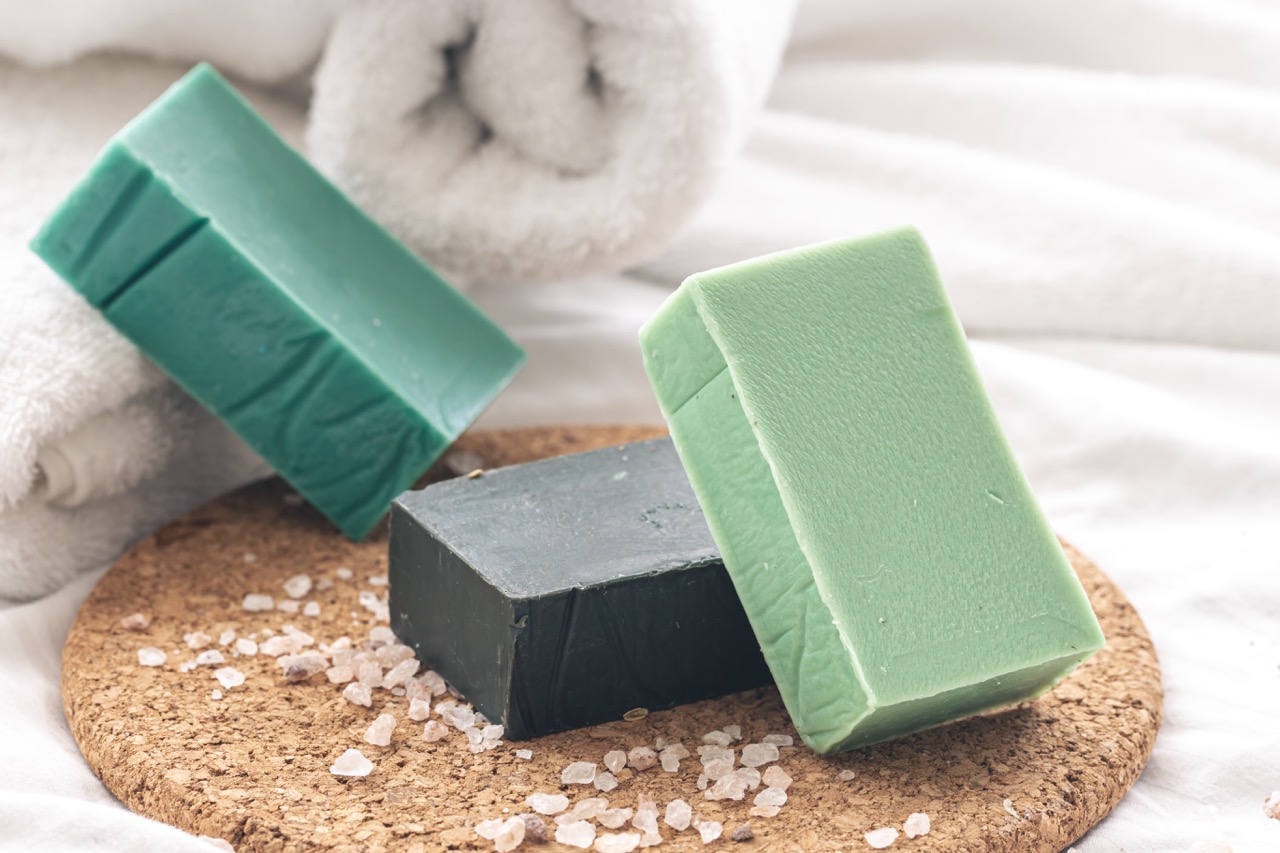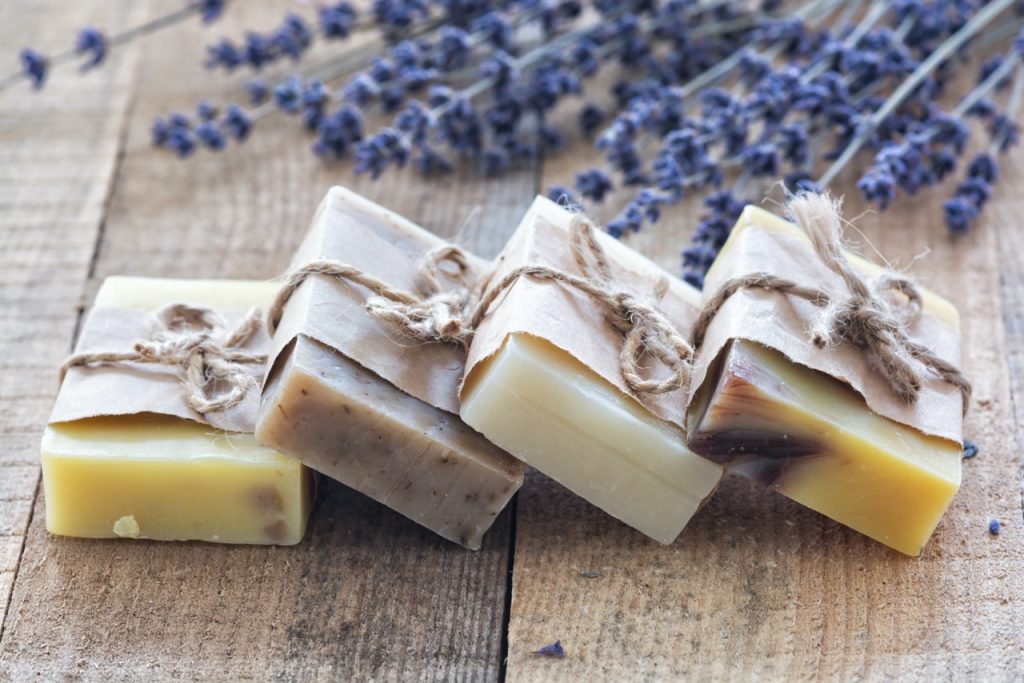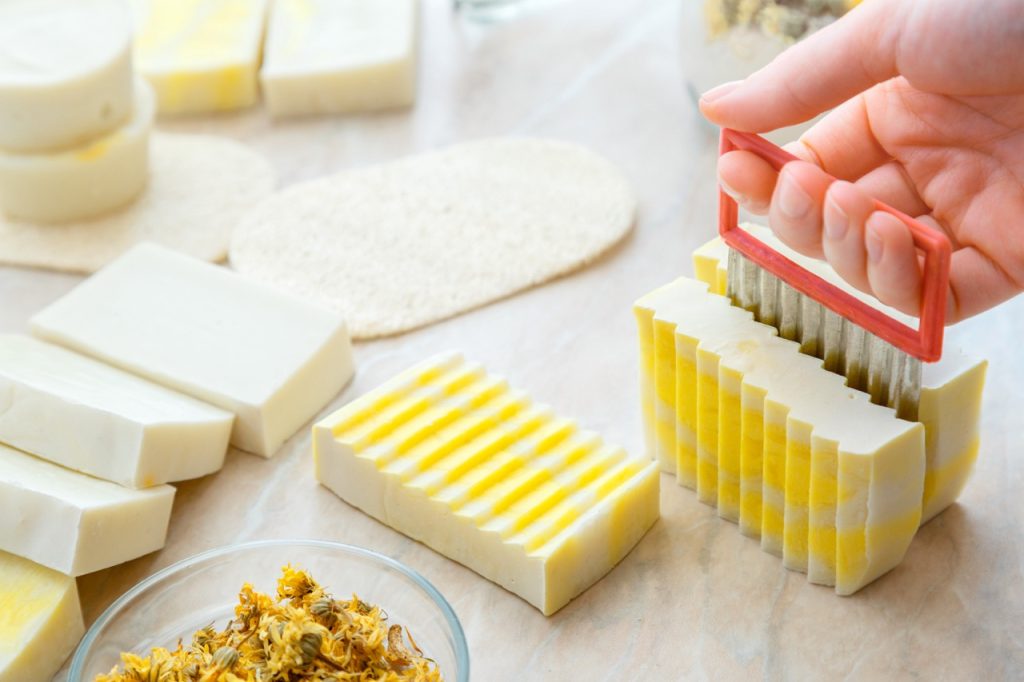Cold process VS hot process soap – which is better? A quick guide

There are two main methods of making soap: cold process (CP) and hot process (HP). If you’re interested in soap making, you’ve probably heard of them. In this article, we explain what is the difference between cold process vs hot process soap. We also point out the advantages and disadvantages of each method. Ready? Let’s start!
Cold process soap – what is it?
Cold process soap making is a traditional, popular and relatively easy method of making soap. It involves mixing fat (oil, butter, etc.) with lye (usually sodium hydroxide) and essential oils, but at a low temperature (30-50°C). Such soap is made at room temperature, without additional heating. The saponification process takes a long time – up to 48 hours, still after the soap mass is poured into the mold. The soap reaches its target hardness after 4-6 weeks.
In this method, the “extra fat” (which is the extra fat that precipitates about five minutes after mixing the ingredients, because it does not react with the lye) is formed from all the oils provided in the recipe. So you don’t have full control over which oil will be your “extra fat”.
What is hot process soap?
The preparation of hot process soap begins just like the cold process, where lye (sodium hydroxide) is first combined with fats and mixed with a blender until it reaches a “pudding-like” consistency. Then, the soap is transferred to a suitable container and heated at high temperature (50-100°C). You can make soap in the oven (Owen Hot Process), in a slow cooker (Crock Pot Hot Process) or in a double pot (Double Boiler Hot Process). Psst… The last method is the most popular and convenient.
It takes a minimum of one hour to cook. During this time, you need to watch the mixture carefully and determine the moment when the soap is well foamed and ready to be transferred into molds. During this time, keep an eye on the mixture and carefully assess the moment when the soap is already foamed and ready to be poured into the mold. This is important – in the HP method, the soap goes through the foaming process during cooking, it does not have to “age”. Within 24-48 hours of being molted, it hardens and is ready for use!

Hot process soap vs cold process soap – main differences
Temperature. Cold process soap is made at 30-50°C, while hot process soap is made at 50-100°C.
Saponification. In the “cold” method, the saponification process takes up to 48 hours and occurs after the soap paste is poured into the mold. In the “hot” method, on the other hand, it takes place during slow cooking.
Time. Hot process soap is made very quickly, in two days maximum, while cold process soap needs several weeks to gain its target hardness.
Equipment. To make cold and hot soap you need the same things. In addition, you’ll need two pots for HP: one large for boiling water and the other smaller (made of stainless steel or glass) for heating soap.
Skills. CP is a technique suitable even for beginners. On the other hand, HP requires more advanced skills. Opt for it only when you feel fully comfortable with the easier method.
Cold process soap – pros
- You can easily customize the soap recipe to your preferences.
- You can add fresh ingredients to the soap to enhance its nutritional or aesthetic value. How about adding milk or fruits?
- The soap can be configured in almost any way. You can give it even the most finely crafted shape!
- Cold process soap is ideal for achieving designer effects. You can easily create intricate swirls and patterns.
- Thick soap allows you to add many, even heavy, additives.
- It’s generally considered a natural soap.
- The soap bar has a smooth and attractive texture. It’s incredibly pleasing to the eye!
- You only need basic soap-making accessories.
Cold process soap – cons
- The “cold” technique requires working with sodium hydroxide. It’s a substance that can be dangerous if you don’t know how to handle it. Get at least some basic knowledge before you go ahead with production!
- The curing of cold process soap can take up to 4-6 weeks. If you plan to make soap as a gift, for example, for Christmas or a birthday, plan carefully! The resulting bar can be used earlier, but it will be less durable and will wear out faster.
- Keep in mind that some dyes may change color in a high pH environment, characteristic of the cold process production. Similar uncertainty applies to fragrance oils – scents may weaken or disappear. Before creating the final bar, test dyes and scents in a “cold” environment.
- The soap mass is thick and opaque, so even if you add glitter to it, it will be invisible.
- After making soap, you’ll have a lot of cleaning to do, especially if you’ve used a lot of dyes.

Hot process soap – pros
- The soap is ready relatively quickly – within 24-48 hours from the start of production.
- Essential oils retain their true scent because they don’t need to go through the saponification process; you add them after the soap is cooked.
- You need less space for soap making. Why? Because you don’t have to store it in molds for 4-6 weeks, as is the case with the CP technique.
- The bars have a “rustic” distinctive appearance. They’re less smooth and strongly evoke the look of natural, handcrafted soap.
- You can choose your favorite luxurious butter or oil and add it after cooking the soap. Then this super-fat will not turn into soap, but will remain loose and moisturize the skin perfectly.
- Cleaning up after making hot process soap is easier.
Hot process soap – cons
- It’s much more challenging to create multicolored soap with beautiful swirls. You need significant experience, use a slightly different method and add additional ingredients to make the soap batter more fluid. Even then, it won’t swirl as well as cold process soap.
- It’s more difficult to use additives such as milk or fresh vegetable purees because they may burn and turn brown.
- You won’t be able to produce a large quantity of bars. This is a significant drawback if you plan to sell soap, but not an issue if you want to make soap for personal use or for loved ones.
- The soap has uneven, rough edges and a specific “rustic” texture. Not everyone likes this.
- Soap expands during cooking. If you don’t use an adequately large pot, the container may overflow. Leaving the boiling soap unattended is not an option.
- Generally HP is considered suitable for those who have mastered the CP technique.
Summary
You already know what’s the difference between cold process vs hot process soap. Now you can make an informed decision on which one you choose and try to master. However, if you’re just starting your soap-making journey, the CP technique will be more suitable. You can explore the HP method later, and with the right experience you’ll surely enjoy it more!
And remember – whether you’re just starting out or you’re a seasoned professional, Soapmaking Friend comes with a set of tools to help you develop recipes, guide you through making those recipes, track their progress, manage your inventory and do cost analysis on your batches. Check this out!


